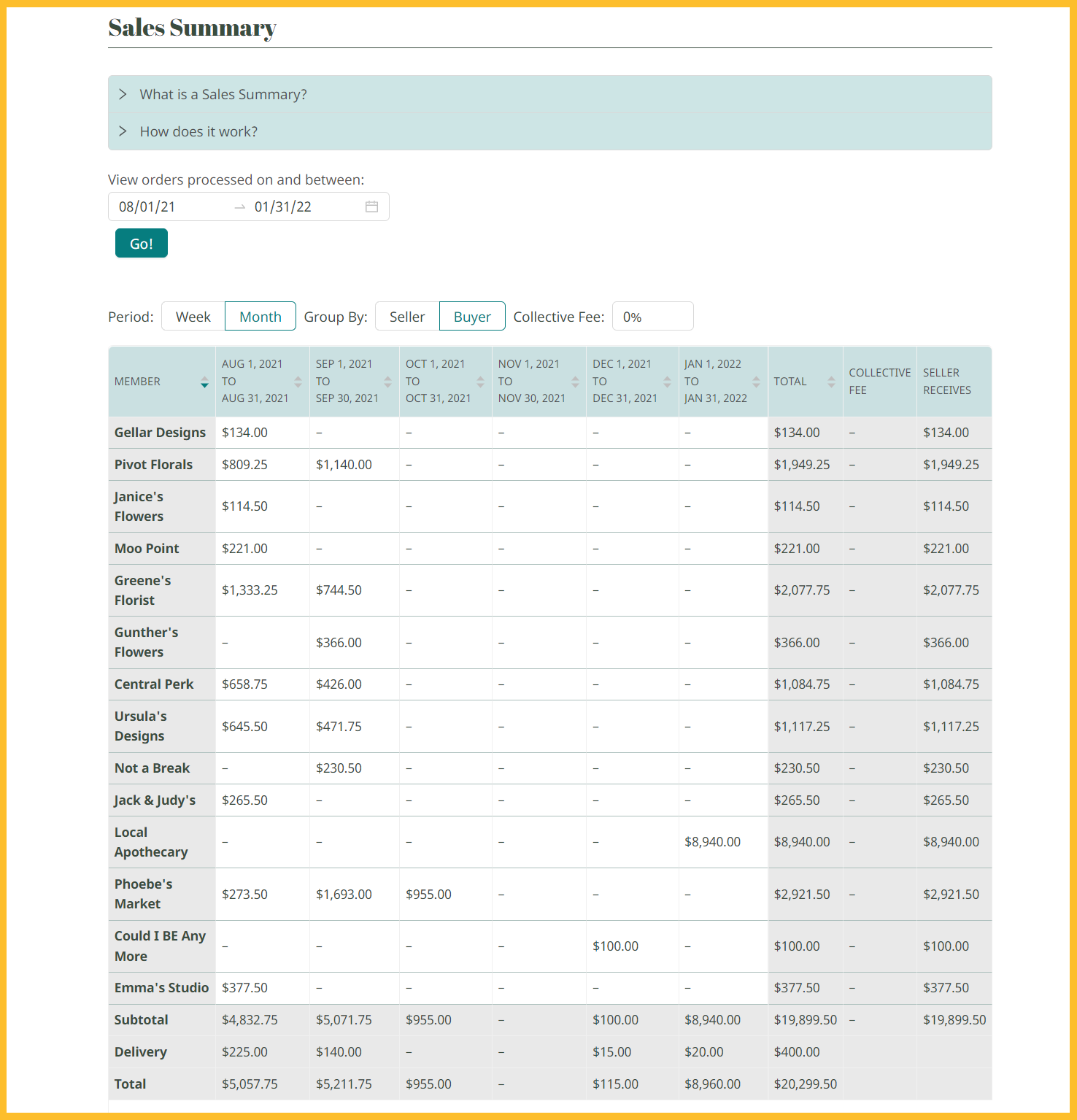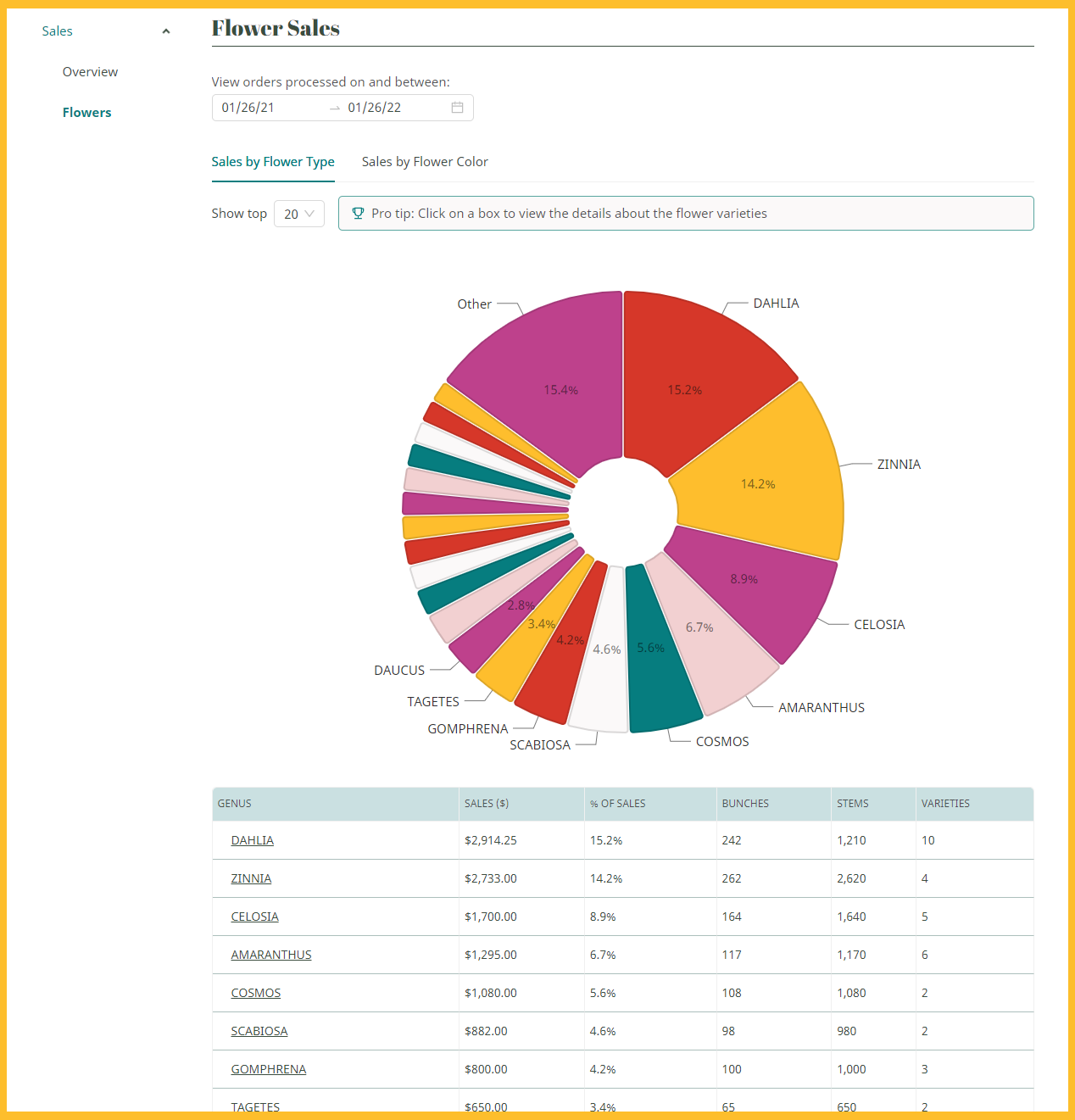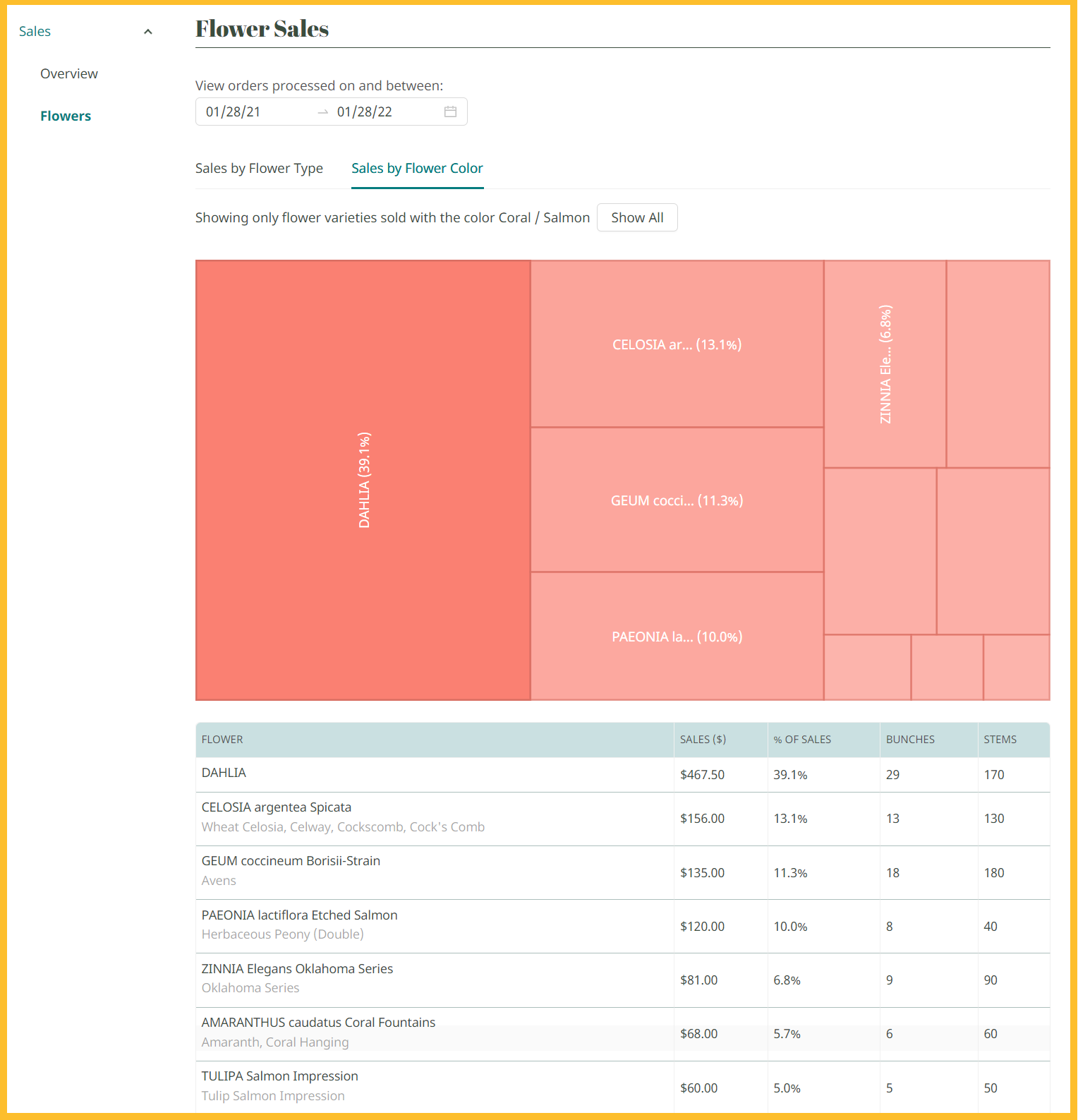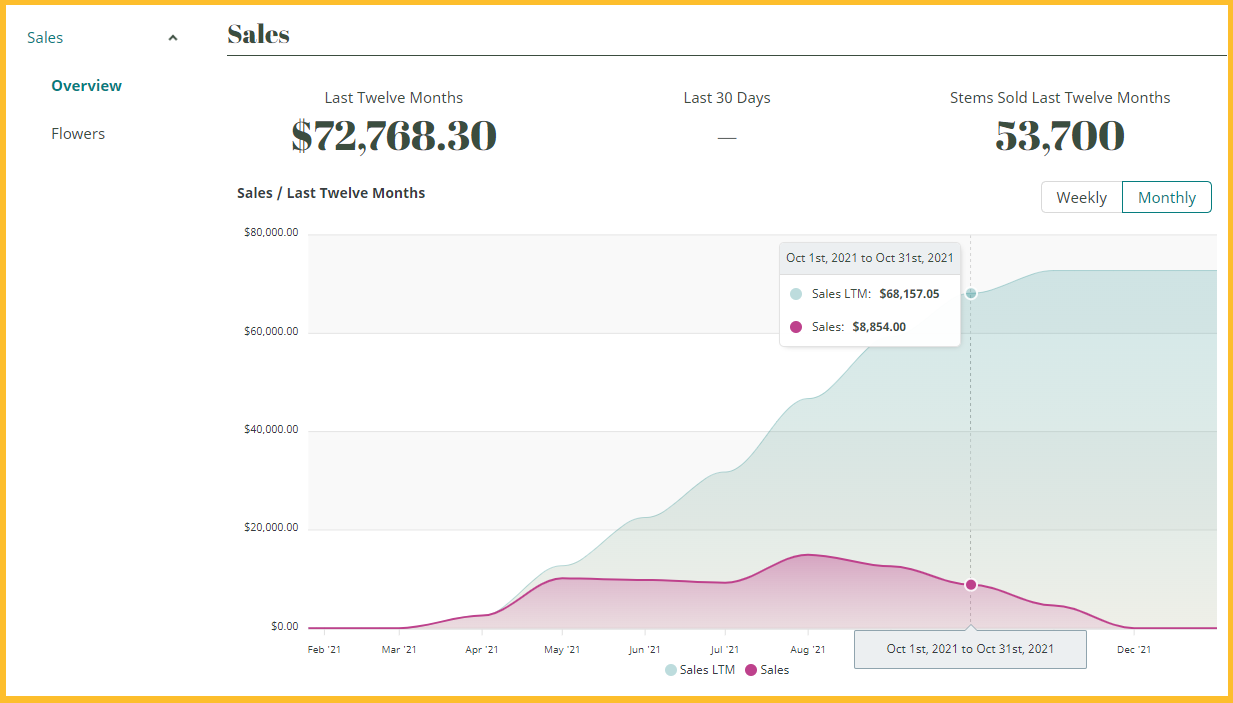A magic bullet for crop planning? Yes, please! We are here for the flower nerds and aspiring flower nerds.
Deciding what to grow for the upcoming season involves a multitude of factors: growing climate, growing space, market demands, sales channels, target customer, and more. Trying to work through all of these manually would be overwhelming - not to mention time-consuming. It usually results in a review of scribbled notes from the season and best guesses, followed by some impulse buying of those seeds we just can’t resist…
There’s an easier way, though! With Rooted, you can now use detailed insights into your sales to guide future decisions. Let’s take a look at a few objective ways to approach crop-planning for next season.
1. Consider the source (of your sales)
Review your sales by buyer; consider who your best customers were, and who your best sales channels were (e.g. wholesale versus retail). Set goals for the coming season, and consider how your crop plan should adjust given the preferences of these buyers and/or channels.

2. Consider your sales by flower type
Review your sales over the season (or over a portion of the season) to discover which flowers sold best. Within each genus, review detailed statistics of each variety - dollars sold, percentage of sales, stem counts, and more! What can you learn from these statistics? Are there varieties you should increase production on, or would eliminate all together?

3. Consider your sales by color
Review your sales by color; explore how the popularity of different colors changes over the course of your growing season, and explore how this might impact your seed selection for next year. Are there times within your cycle that you should increase production of blush varieties? Are there color families that you are surprised are doing as well as they are? Or colors you should push more for next year?

4. Explore your seasonal fluctuations
Review your weekly or monthly sales trends over the course of your season to help allocate labor resources and plan for peak production and sales weeks. Consider what your sales curve looks like (i.e. when you start selling, when you hit those peaks, and when you taper down, and explore ways to smooth your revenue in those dips).
Planning ahead for next year using simple, intuitive tools will help you scale your business intelligently - and take the guesswork out of planning next time around! But don’t forget to continue to include a few of those impulse buys…

Categories

About the Author
Rooted Farmers
The Rooted Farmers Team is happy to bring you content that we hope provides value. The topics covered range from farming and running a hub, to sales, marketing, and all things related to building your business, to the unique challenges faced by growers. Our philosophy in sharing this content is that we are always in a position to learn; embracing this mentality will only help us to grow, both within our businesses and personally. If there is a topic that you feel would be of value to the Rooted Farmers community, we encourage you to share your ideas with us by sending an email to: reachout@rootedfarmers.com
